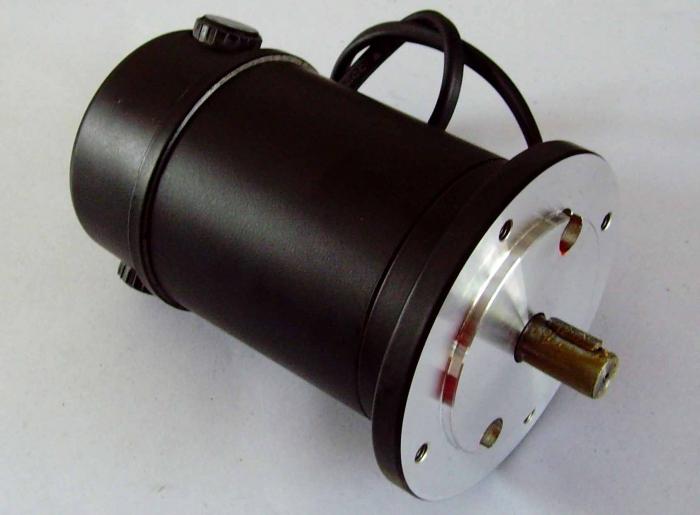Electric machines can be divided into two types according to their purpose: this is a generator and a DC motor. What is noteworthy, they are arranged almost identically. The only difference is that the generator converts the mechanical energy of rotation of the rotor in the magnetic field created by the stator winding into electric, and the engine - vice versa (converts electrical energy into rotation energy, that is, mechanical).

The DC motor has in its design an anchor with conductors laid in its grooves. The second main part of this machine is the stator and its multi-pole field windings. The principle of operation of such a device is quite simple. Passing direct current in different directions through the wire of the upper part of the armature (on one side “from us”, and on the other “towards us”). According to the famous rule of the left hand, those conductors that are at the top will begin to be pushed out of the magnetic field created by the stator to the left, and the conductors located at the bottom of the armature will be pushed to the right.
Since copper conductors are laid in special grooves, the forces of influence will be transmitted to the anchor and rotate it.
When one part of the conductor turns and stands opposite the south pole of the stator, the braking process will begin (the conductor will begin to push in to the left side). To prevent this process, it is necessary to change the direction of the current in the wire. For this, a so-called collector is used, and an engine with this principle of operation is called a DC collector motor.
In it, the armature winding will transmit torque to the motor shaft, and that one will set in motion the necessary equipment mechanisms. It should be noted that the whole principle of operation of such equipment is based on inverting direct current in the anchor circuit.
However, there is also a brushless DC motor. Unlike the collector one, it does not have brushes in its device that create additional danger during the operation of the engine (brushes rub against a rotating rotor and can create sparks, which can lead to ignition of poorly insulated parts of an electric machine).
A DC motor without a collector has in its design bearings and special controllers programmed to ensure all switching processes inside the motor. In addition, it has micro-drives with high-precision positioning.
That is why such a device will cost significantly more than a conventional DC commutator motor. However, the use of such an engine is fully justified: its wear resistance, reliability, and safety have been increased. Significantly higher and efficiency (COP), and resistance to overloads.
In contrast to the DC brushless motor, the modernization of which has virtually ceased, the brushless model is constantly updated. For example, more recently, a three-phase contactless DC motor without a collector has been developed.